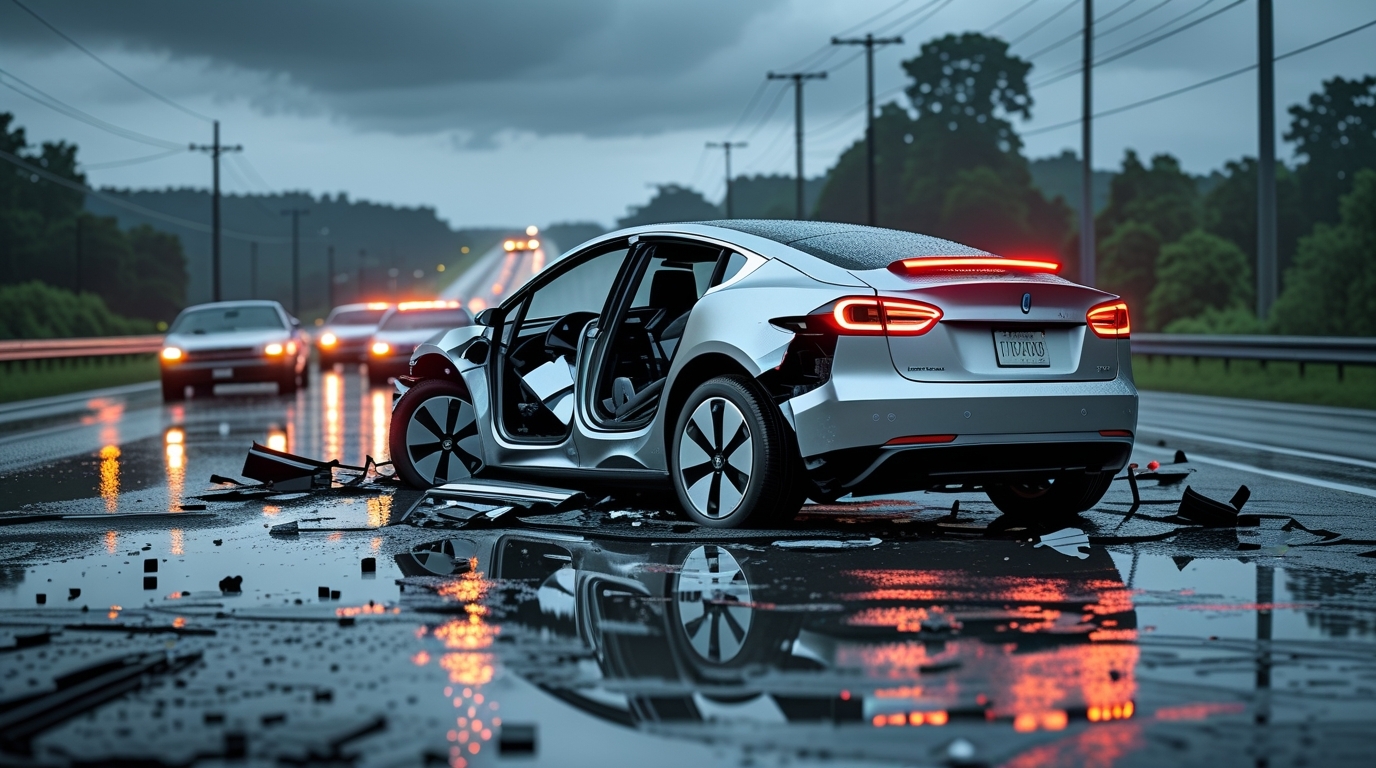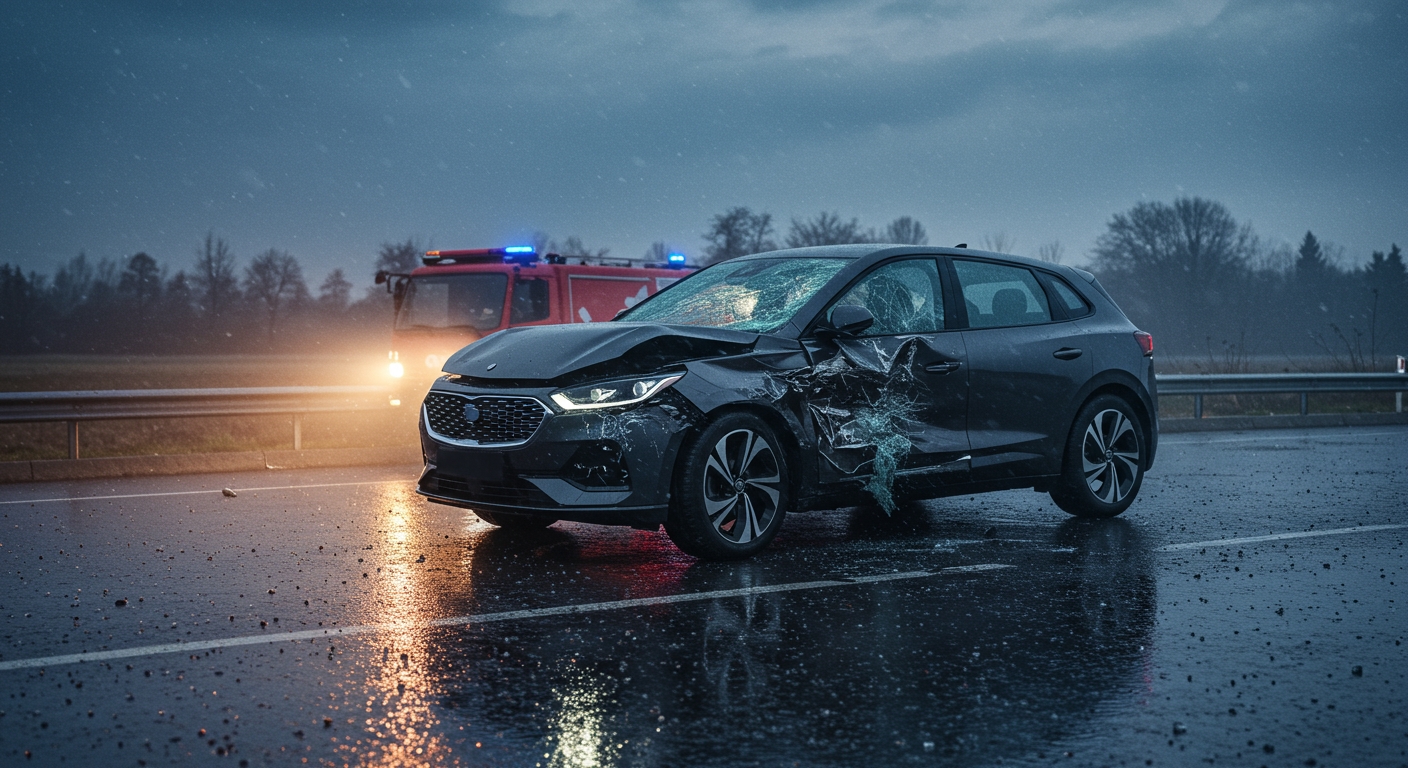The rise in electric vehicles (EVs) has been anything but subtle. In 2023, EVs made up 7.6% of new vehicle sales in the U.S., and that number keeps climbing, according to Kelley Blue Book. But while EVs are reshaping how we drive, they’re also changing how crashes happen and how injury claims play out.
Electric vehicle accidents often involve high-voltage battery fires, silent operation risks, and heavier impacts. For example, the Tesla Model S weighs over 4,700 pounds. That’s nearly 1,000 pounds heavier than a gas-powered sedan.
And when that much weight hits at speed? Injuries can be more severe. The legal aftermath is often more complicated.
If you or someone you know has been involved in an electric vehicle accident, you’re not just facing a typical insurance claim. You’re dealing with cutting-edge tech, unique risks, and manufacturers with deep pockets.
Why EV Accidents Are Different
Traditional car crashes and EV accidents share many similarities, but EVs bring unique hazards to the table. Here’s why these collisions need special attention:
- Battery Fires Are Rare but Dangerous
Lithium-ion batteries can ignite when damaged. The National Transportation Safety Board (NTSB) found that EV fires burn hotter and longer than gas fires, sometimes reigniting hours later. Emergency responders may need thousands of gallons of water to cool the battery pack.
- Vehicle Weight Affects Crash Severity
EVs tend to be heavier due to their battery packs. The Insurance Institute for Highway Safety (IIHS) warns that added weight can increase the severity of injuries for those in smaller cars struck by an EV.
- EVs Are Quiet at Low Speeds
Silent operation may seem like a perk until a pedestrian doesn’t hear the car coming. In fact, the U.S. Department of Transportation requires EVs to emit warning sounds at speeds below 18.6 mph to reduce pedestrian injury risk.
- Complex Technology Makes Repairs Expensive
High-voltage components and advanced driver-assistance systems (ADAS) make EV repairs more expensive and time-consuming. This can affect how insurance claims are processed and how fault is determined.
Common Causes of Electric Vehicle Accidents
Just like gas-powered vehicles, EV accidents can stem from distraction, speeding, or impaired driving. But some risks are more EV-specific:
- Autopilot misuse: Tesla’s Autopilot and similar systems aren’t fully autonomous. Misunderstanding their limits has led to crashes.
- Battery defects or failures: Faulty battery packs can overheat or short-circuit during a collision.
- Charging station hazards: Poorly designed or maintained charging setups can lead to tripping hazards, electrocution, or fire.
In Nashville, Tennessee, EV use is growing fast. According to the Tennessee Department of Environment and Conservation, EV registrations across the state exceeded 30,000 in 2024, with Davidson County leading in volume.
As more electric vehicles hit the roads in and around Nashville, the number of related crashes is also rising. Local drivers, cyclists, and pedestrians are increasingly exposed to the risks tied to EV performance, weight, and battery failure.

Unique Risks in Electric Vehicle Crashes
Who’s Liable in an EV Crash?
Liability in electric vehicle accidents can get complicated quickly. Multiple parties may share blame, depending on how the crash happened:
- The driver is speeding, distracted, or DUI.
- The manufacturer’s battery defect or software glitch contributed.
- The charging station operator if poor maintenance or design caused harm.
- A third-party mechanic for improper repairs or unsafe modifications.
If the crash involved an autonomous or semi-autonomous vehicle mode, your attorney may also investigate software logs, sensor data, and whether the system functioned properly.
In Tennessee, personal injury law uses a modified comparative fault rule. If you’re 50% or more at fault, you can’t recover damages. If you’re 49% or less at fault, your compensation is reduced by your share of blame. This highlights the importance of clear evidence and legal guidance in EV crash cases.
Steps to Take After an Electric Vehicle Accident
If you’re in a crash involving an EV, whether you’re the driver, a passenger, or a pedestrian, here’s what to do immediately:
- Get to safety. Battery damage could lead to delayed ignition. Move away from the vehicle if it’s smoking, leaking, or making unusual sounds.
- Call 911. Mention that an electric vehicle is involved, so firefighters and EMTs are prepared with the right equipment.
- Document everything. Take photos of the crash scene, vehicle damage, warning lights, skid marks, and injuries.
- Don’t interact with the battery. Damaged lithium-ion batteries can be hazardous. Leave inspection and handling to emergency personnel.
- Seek medical attention. Some injuries, especially from electric shock or internal trauma, don’t show symptoms right away.
- Contact a personal injury attorney. These cases often involve more than just the other driver’s insurance. You may be dealing with complex liability, manufacturer defense teams, or corporate lawyers.
EV Accidents and Insurance Challenges
Filing a claim after an electric vehicle accident is often more complicated than a typical crash case. The insurance process can involve advanced vehicle data, proprietary technology, and legal gray areas that don’t apply to gas-powered cars.
EV crash claims often raise questions that standard policies and adjusters aren’t equipped to handle:
- Is it a product liability case or driver negligence?
If the EV malfunctioned or the battery caught fire after the collision, your claim may involve the vehicle manufacturer, not just the other driver’s insurance. But proving a defect requires technical evidence.
- Did the autonomous system malfunction?
Many EVs come with advanced driver-assist features, such as Tesla Autopilot or Ford BlueCruise. If the system was engaged during the crash, it’s essential to examine how it performed. Was the driver responsible, or did the system fail to detect an obstacle or react in time?
- Was the battery defectively designed?
If the lithium-ion battery sparks, leaks, or explodes, the cause may not be immediately apparent. Design flaws, inadequate shielding, or software errors can render batteries susceptible to thermal runaway. These cases can turn into complex product liability lawsuits.
- Who owns the data needed to prove what happened?
Most EVs collect and store data through event data recorders (EDRs), internal cameras, and over-the-air software logs. This information can indicate how fast the car was traveling, whether the driver applied the brakes, and if any safety systems were activated.
But the data often belongs to the manufacturer or is encrypted. Insurance companies don’t always have access, and manufacturers may withhold it unless legally compelled.
That creates a serious barrier for injured victims trying to prove fault or defend themselves from blame. Without this data, it’s difficult to understand what really happened. The burden often falls on the injured party to locate it.
Even when insurance does step in, claims involving EVs tend to take longer. Battery repairs can be costly, parts may be more complex to source, and insurers may attempt to deny or delay coverage while blaming other parties.
How The Roth Firm Can Help
At The Roth Firm, we understand what makes electric vehicle accidents unique and how to navigate the legal complexities that come with them. From investigating high-voltage battery fires to proving product defects, our attorneys dig deep to protect your right to fair compensation.
Our team has represented clients in accidents involving popular electric vehicles. From busy streets in downtown Nashville to quiet suburban neighborhoods and highways like I-65, we understand the unique challenges these cases bring and know how to move quickly and effectively.
Contact us today to speak with a Nashville electric vehicle accident attorney.

